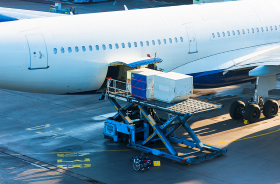The International Air Transport Association (IATA) released its global air cargo market data for February 2025, revealing a slight dip in demand:
Global demand, measured in cargo tonne-kilometers (CTK), decreased by 0.1% compared to February 2024 levels (+0.4% for international operations). This marks the first year-on-year decline in demand since mid-2023.
Capacity, measured in available cargo tonne-kilometers (ACTK), dropped by 0.4% compared to February 2024 (+1.1% for international operations). Note: Year-on-year comparisons are influenced by the extra day in February 2024 due to the leap year.
“February saw a modest contraction in air cargo demand, marking the first year-on-year decline since mid-2023. A significant factor in this is the extraordinary performance of February 2024, driven by a leap year, the Chinese New Year, disruptions in sea lanes, and a boom in e-commerce. Additionally, rising trade tensions are a growing concern for air cargo. As equity markets show unease, we urge governments to prioritize dialogue over tariffs,” said Willie Walsh, Director General of IATA.
Key Operating Environment Factors:
Industrial production rose by 3.2% year-on-year in January, the highest growth in two years, while global trade expanded by 5%.
Jet fuel prices averaged $94.60 per barrel in February, a 2.1% decrease from January.
Global Manufacturing Output: The Purchasing Managers’ Index (PMI) for global manufacturing was above the 50-mark (51.5), signaling growth. However, the PMI for new export orders increased slightly to 49.6, remaining just below the growth threshold.
Inflation remained elevated in the US, Europe, and Japan, with only a slight easing from the previous month. Meanwhile, China recorded its first decline in consumer prices in 11 months, highlighting ongoing deflationary pressures.
Regional Performance:
Asia-Pacific airlines saw a 5.1% year-on-year growth in demand for air cargo in February, with capacity up by 2.7%.
North American carriers experienced a 0.4% year-on-year decline in demand, with capacity falling by 3.5%.
European airlines reported a 0.1% year-on-year decrease in demand, with capacity slightly decreasing by 0.2%.
Middle Eastern carriers saw the most significant drop in demand, with an 11.9% year-on-year decrease. Capacity also decreased by 4.0%.
Latin American carriers led regional growth with a 6.0% year-on-year increase in demand, while capacity rose by 7.6%.
African airlines saw a 5.7% year-on-year decline in demand, with a slight decrease in capacity by 0.6%.
The Trans-Pacific route remained the busiest trade lane in February. Intra-Asia saw notable growth, moving up to the fifth position in terms of busiest routes. Europe–Asia and Transatlantic routes also saw growth, while Middle East–Asia and European routes experienced a decline.




